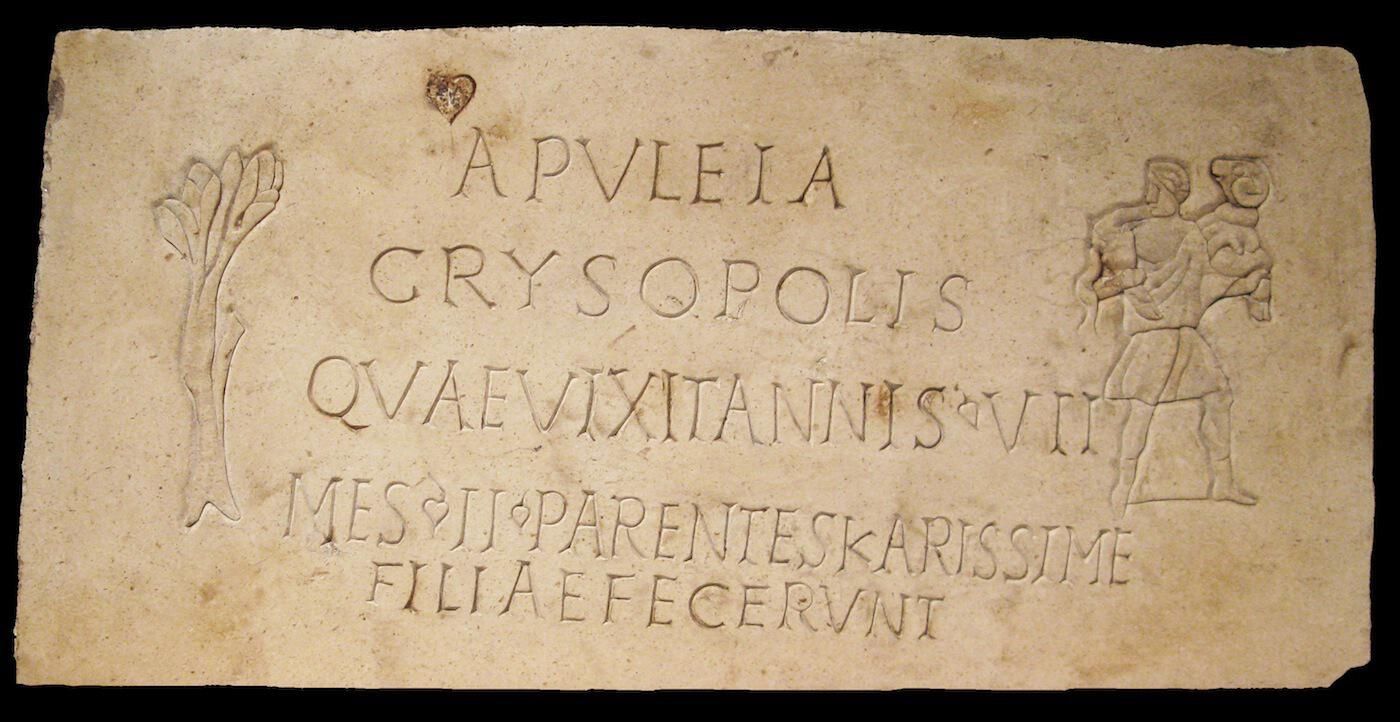Funerary Inscription of Apuleia Crysopolis
Name/Title
Funerary Inscription of Apuleia CrysopolisEntry/Object ID
07R02115Description
Mable slab with latin inscription with a tree on the the right side, a heart above the first letter of the inscription, and a man holding a sheep on the left. This is a funerary stele which was placed across the opening of a loculus, or a slot-type grave. Most burials in the catacombs do not bear inscriptions. Whether Early Christian or traditionally pagan Roman, the inscriptions follow standard Roman formulas.Type of Sculpture
ReliefArtwork Details
Medium
MarbleContext
This funerary inscription was found in the catacombs of San Callisto in Rome. This is a funerary stele which was placed across the opening of a loculus, or a slot-type grave. Most burials in the catacombs do not bear inscriptions. Whether Early Christian or traditionally pagan Roman, the inscriptions follow standard Roman formulas. This particular inscription betrays no overt Christian tendencies in its language. the surname Crysopolis, however, indicates that the child was from a Greek family which had lived in Rome long enough to give her a Latin first name. The letters are roughly chiselled, indicating that perhaps the family was lower class and unable to afford better. The 'Tree of Life' symbol on the right is a common Early Christian symbol, and the 'Good Shepard' symbol is Greco-Roman motif adopted by Christians to represent Christ. The appearance of this motif indicates that the inscription, and thus the child and her family, were probably Christian.Made/Created
Date made
200 CE - 399 CETime Period
Late AntiqueEthnography
Culture/Tribe
Roman

